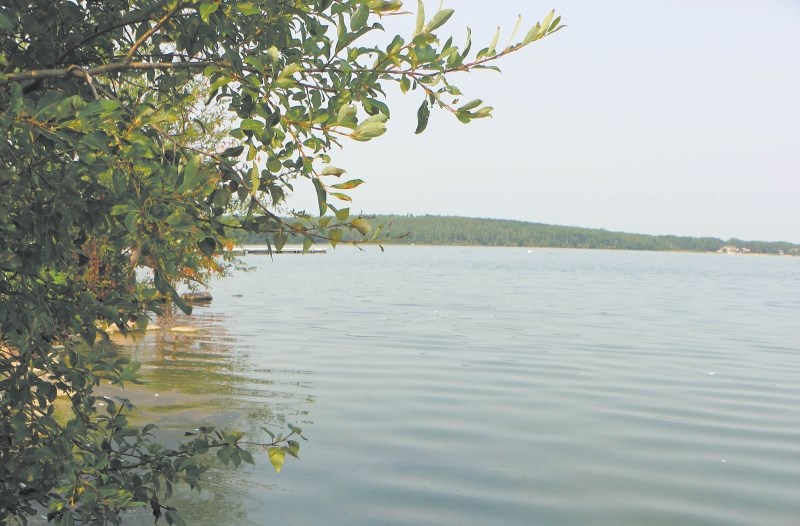The water issues in the Town of Bonnyville will not be getting relieved any time soon due to a lack of government funding, leaving local officials fed up with the province's priorities.
“We certainly sympathize with the province that there are budget constraints but we look within those spheres to be able to say ‘look, we've got to be able to leverage some funding,'” said Bonnyville Mayor Gene Sobolewski. “There are some other water projects within Alberta too and those should be given a higher priority than building a blasted ring road.”
That ring road Sobolewski is referring to is just one of many road projects set in the province's recent budget that will begin over the course of the next year. With the release of the 2015 Alberta budget, also came the announcement that the Water for Life Program funding was reduced to a total of $30 million. There was also no increase to the Alberta Municipal Waste Water Partnership program. This led the government to say that there will be no new projects in 2015, meaning that Bonnyville's increasingly deteriorating water treatment plant will have to be patched up for at least another year.
“This year there will be no new projects. It is projects that have already been committed to in previous years, so we're trying to catch up on that,” said Christine Way, Press Secretary for the Minister of Transportation.
Way added, “At this point in time we couldn't say for certain when anyone who is waiting for approval can expect to see funding.”
The Town's water treatment plant is 30 years old, outlasting its 25-year life span, and despite ongoing constant mechanical upgrades, the technology used for treatment is still not up to date.
“We are getting the quality of water that we need in order to meet the guidelines to make it safe for everybody to drink, but we're not using ozone, we're not using ultra violet, we're not using membrane filters, which are the state of the art new stuff. We're using the old technology, which is add chemicals and filter it out,” said CAO Mark Power.
The main issue facing the water treatment plant is the source of the water, Moose Lake. Both Power and Sobolewski stated that there is no sense in spending money to upgrade the plant if the source isn't able to be used long-term. As they have been for years, the Town continues to wait for funding to come down the pipes for a regional waterline.
“There was talk years ago about what upgrades we would need to do to our Water Treatment Plant. Then with Alberta Environment pushing for regional systems that stopped because we would have a waterline from Cold Lake,” said Director of Public Works and Utilities Lyndon Lay.
With the water treatment plant only required to run at about a quarter of the capacity it was designed for, only 2,500 cubic meters per day as opposed to its design capacity of approximately 11,000, Acting Plant Supervisor Roy Runzer said the plant will continue to be able to meet the demands the Town has.
“If we're going to just produce the quality of water we (currently) are without new technology, we can keep it going for quite a while.”
Power added, “Roy's telling us it's in the same condition now as it was 10 years ago. We keep enough investment into that plant to make sure it's able to keep delivering water and we'll have to evaluate that again.”
Unfortunately, with no government funding coming for the regional waterline in the foreseeable future the question now is how long can the water treatment plant be sustained.
“The population is growing and basically we're at critical mass right now, it's just a matter of how much more duct tape and how many more band aids can we continue to put on that plant,” said Sobolewski.
With only a total of $55 million in provincial funding between the Water for Life and Alberta Municipal Wastewater Partnership, Way explained that the demand for funding far outstrips what's available.
“(There are) approximately $800 million in projects waiting and those will be prioritized on a health and safety basis and then we will go down to environmental impact etc.”
However, she noted that if there is an emergency the government will provide assistance if needed.
“When it has to deal with water or wastewater and a community's ability to provide their residents with clean drinking water or to be able to effectively treat wastewater, we would certainly treat that as an emergency and take steps to intervene,” said Way.
Sobolewski was less than impressed with the government's reactive stance instead of being proactive when it is already evident a problem exists.
“I would think that if somebody came out and stated that we would have to wait for an emergency to happen, I think that's irresponsible...if funding can be found miraculously in an emergency, then money can definitely be found prior to the emergency occurring.”
He added that he doesn't believe the Government of Alberta's claims that there is no money that could be spared for at least the design aspect of the regional waterline.
Since the province is standing firm on their end, growing increasingly frustrated, the Town of Bonnyville has taken it on themselves to look at alternate funding opportunities. Sobolewski said one of those opportunities is using money from ID 349 (the Cold Lake Air Weapons Range) to finance some of the waterline in a partnership with the province.
At this point, there is no certainty for when there will be funding available from the provincial government for the regional waterline and subsequently, the end of concerns about the water treatment plant. Power said the biggest obstacle for the treatment plant right now, is the uncertainty.
“If we don't have a serious timeline for when the regional waterline is going to come, we will have to take a serious look at our water treatment plant.”



